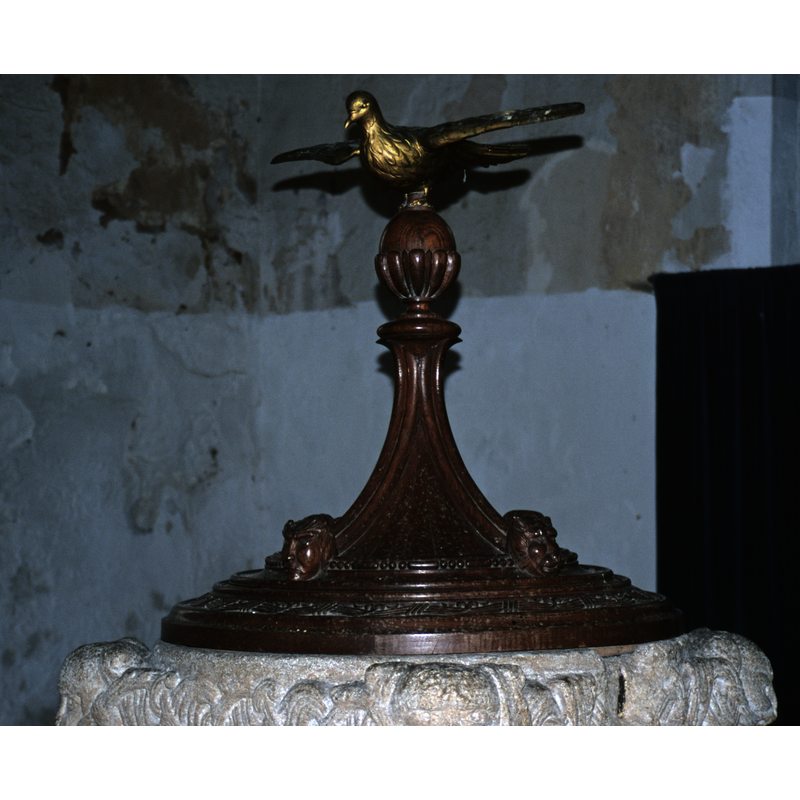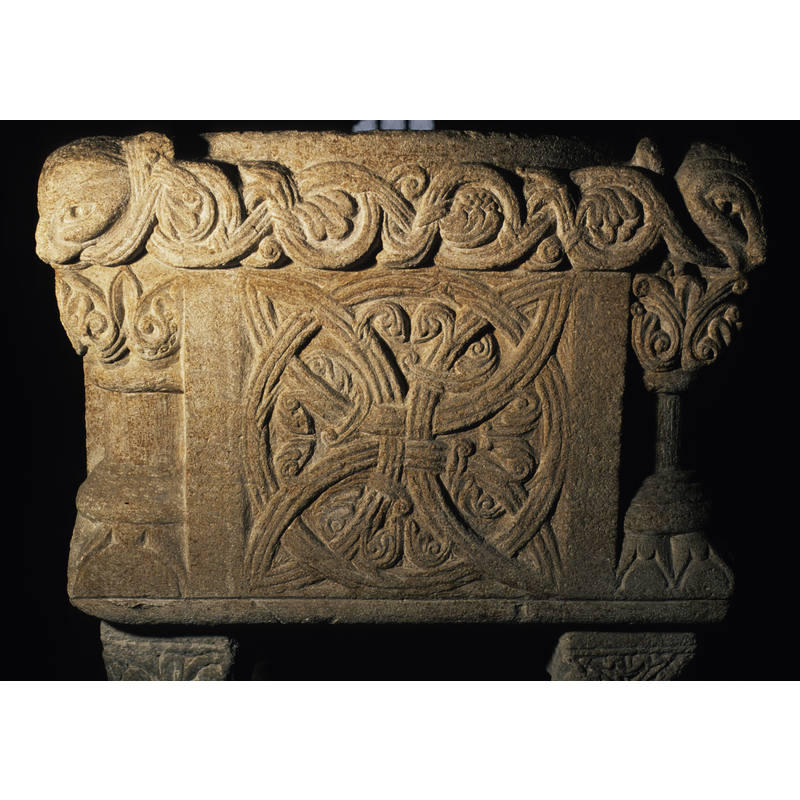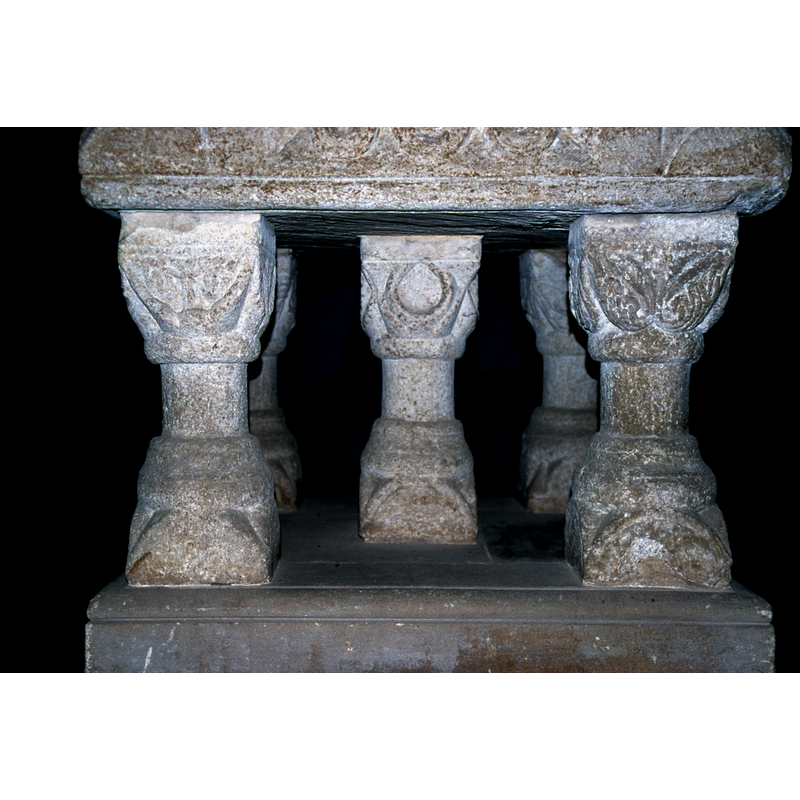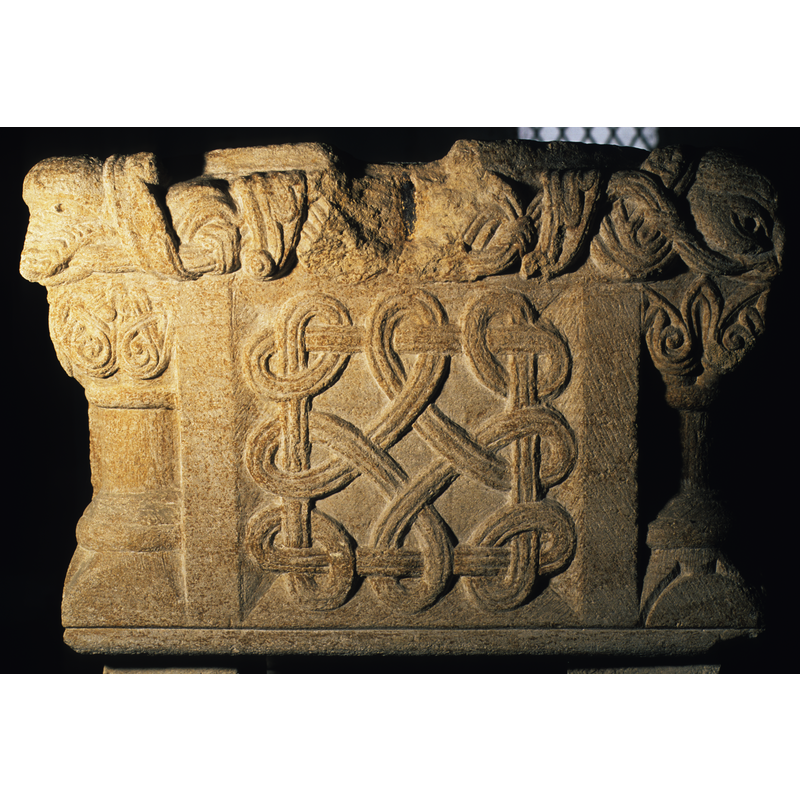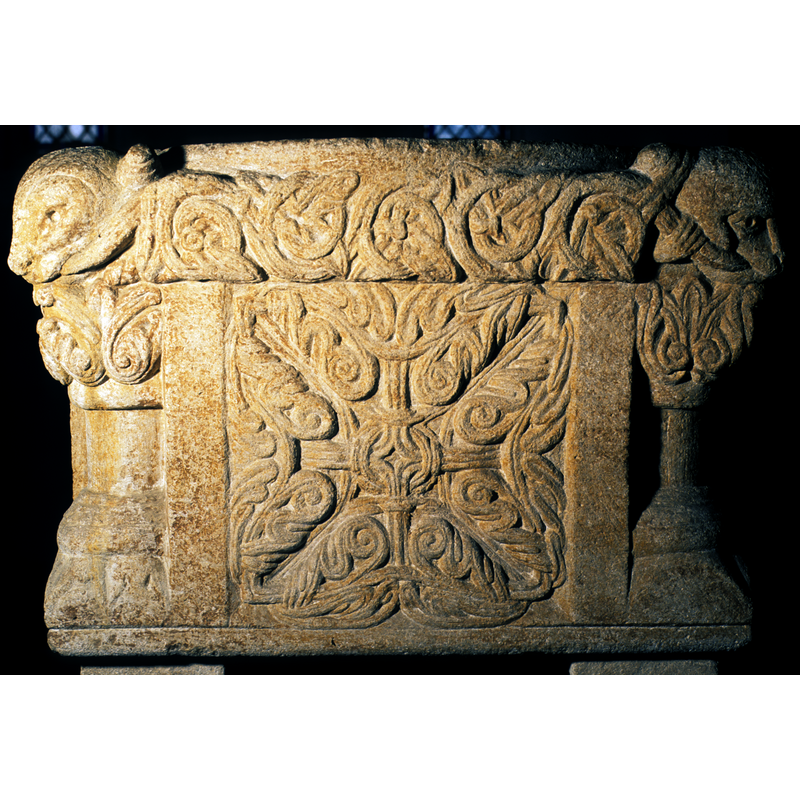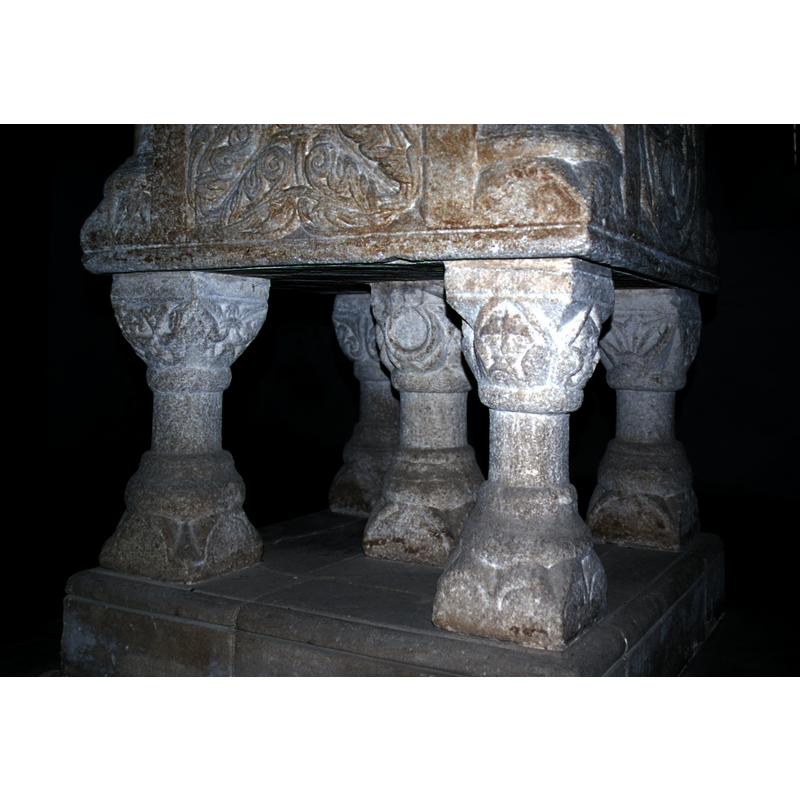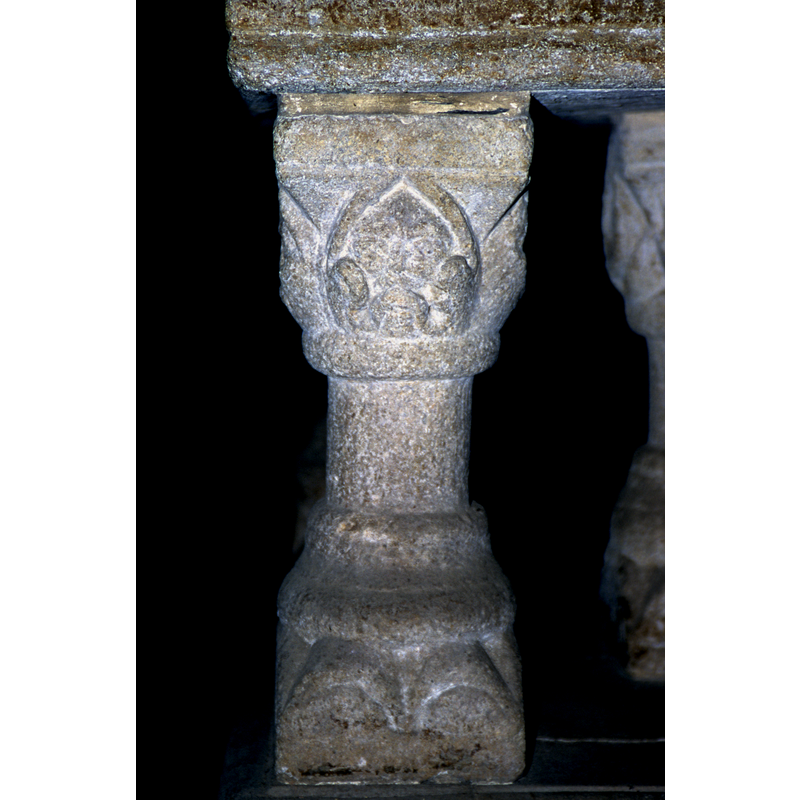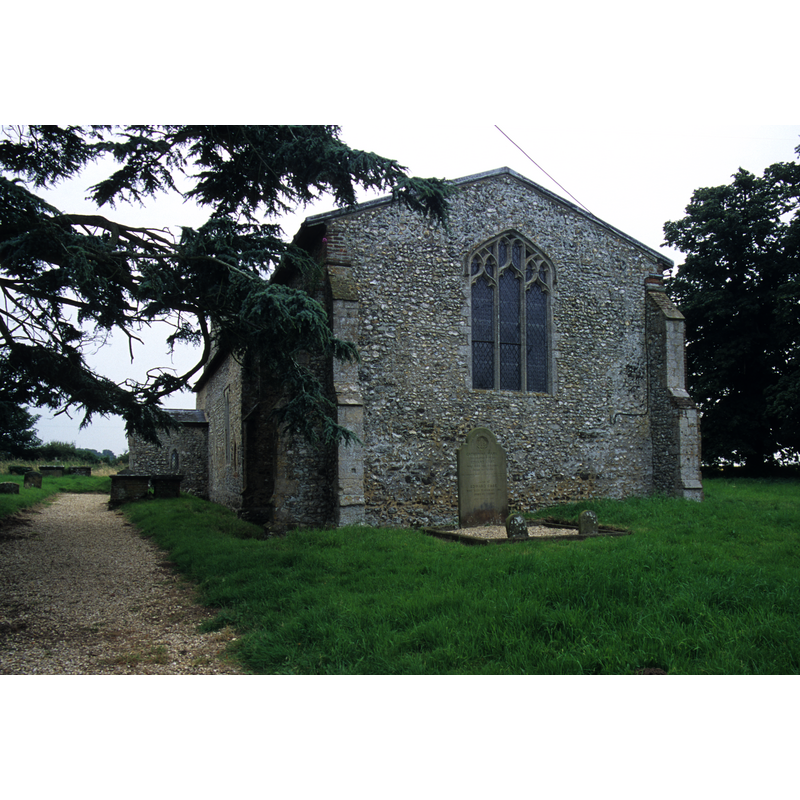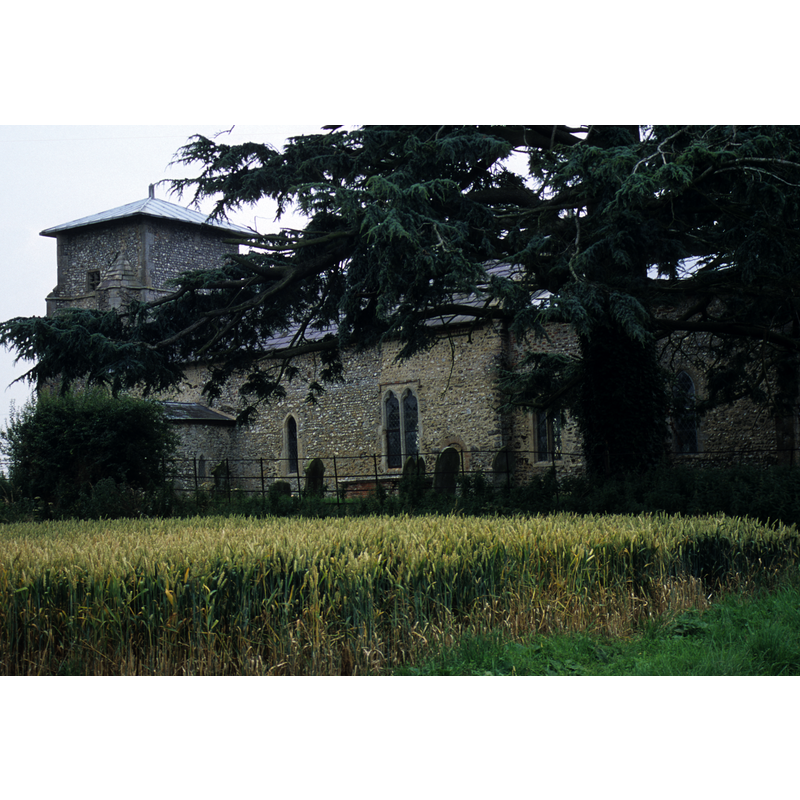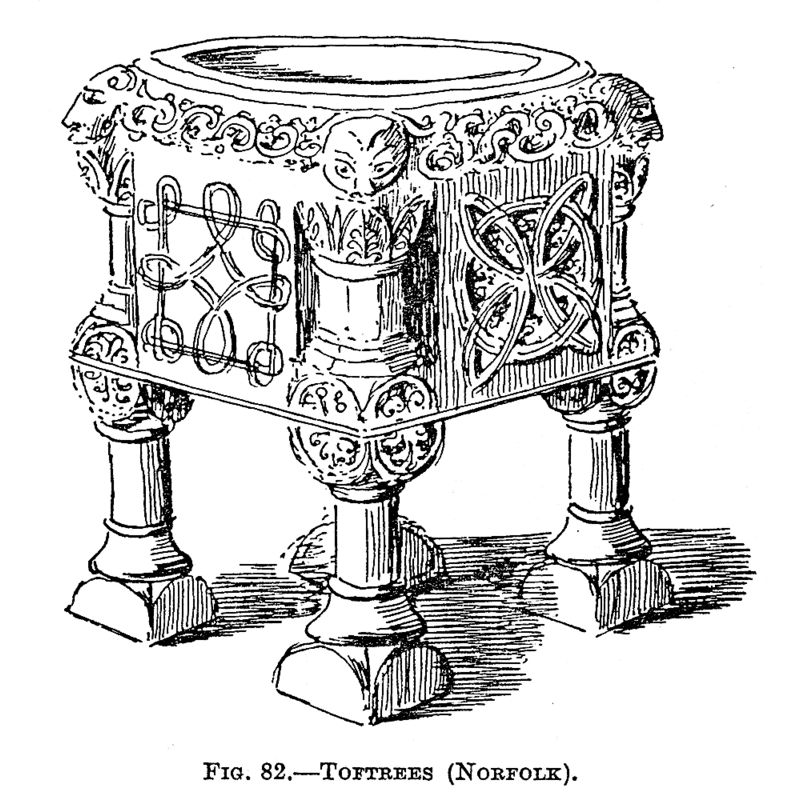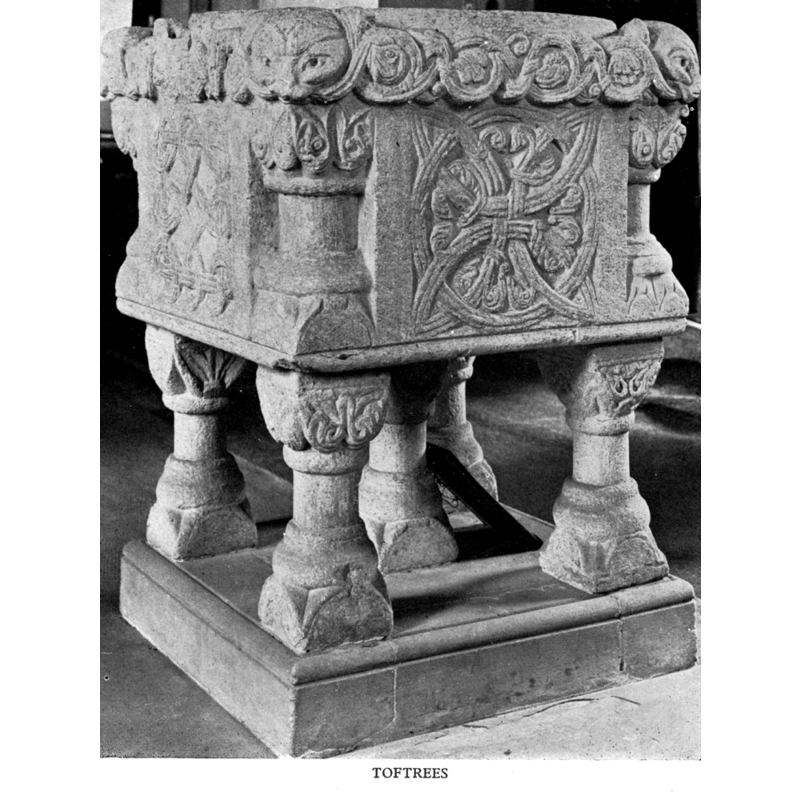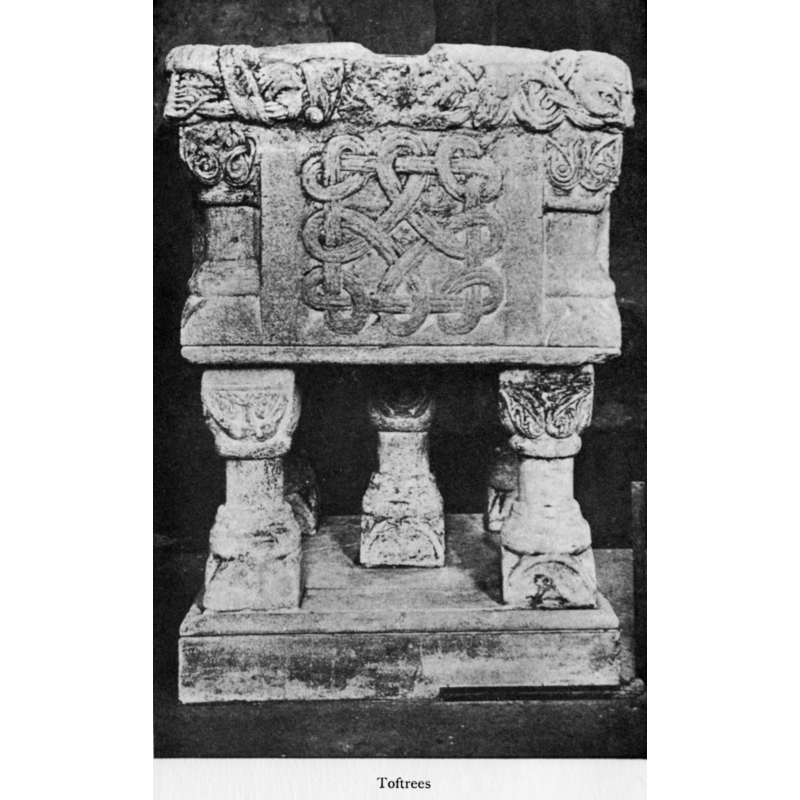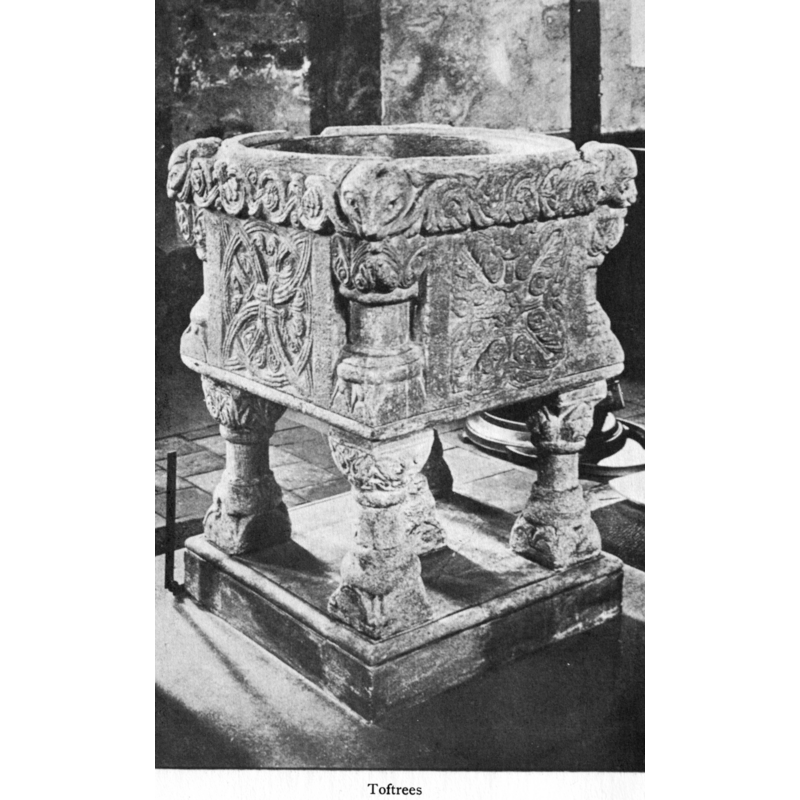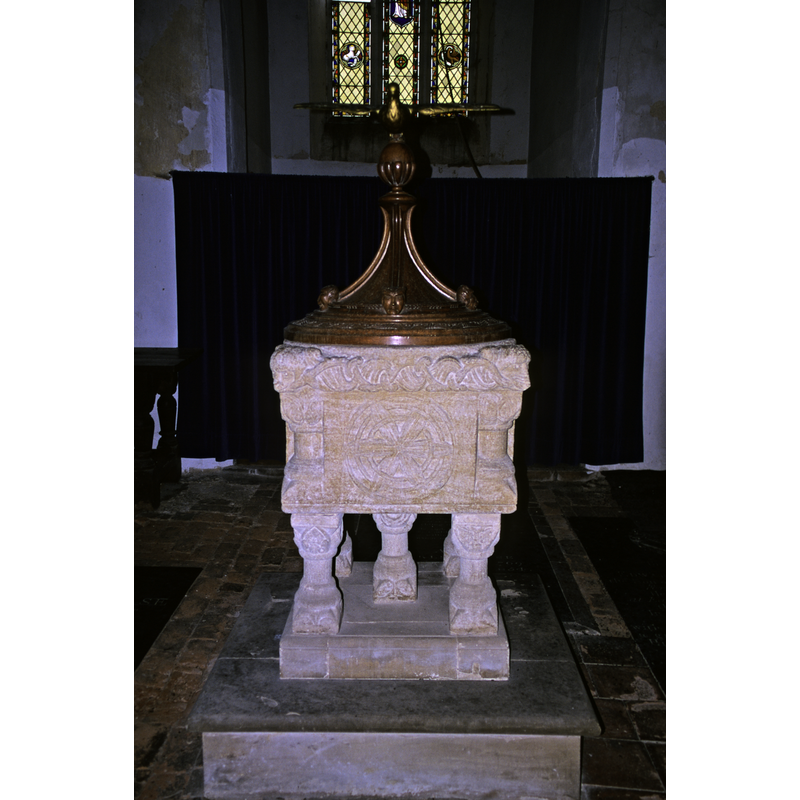Toftrees / Tofsas / Toftes / Tofts

Image copyright © Baptisteria Sacra Index, 2023
Results: 25 records
animal - bird - dove
animal - head - 4
design element - architectural - column - columns with capitals and bases - 4
design element - motifs - concentric circles - 6-petal motif
design element - motifs - foliage
design element - motifs - foliage
design element - motifs - interlace
design element - motifs - interlace - intertwined circular
design element - motifs - quatrefoil - in a circle
design element - motifs - vine - acanthus - with arum bunches
view of base
view of base - detail
view of church exterior - south porch
view of church exterior - southeast end
view of church exterior - southeast view
view of church exterior in context - east view
view of font
view of font
view of font
view of font - east side
view of font - north side
view of font - southwest side
view of font - west side
view of font and cover
INFORMATION
FontID: 00367TOF
Object Type: Baptismal Font1
Church/Chapel: Parish Church of All Saints
Church Patron Saints: All Saints
Church Location: Shereford Road, Toftrees, Norfolk, NR21 9, United Kingdom
Country Name: England
Location: Norfolk, East Anglia
Directions to Site: Located 4 km SW of Fakenham down the A1065, 40-45 km WNW of Norwich
Ecclesiastic Region: Diocese of Norwich
Historical Region: Hundreds of Gallow and Brothercross
Font Location in Church: Inside the church, in the W end, centre nave
Century and Period: 12th century, Late Norman
Cognate Fonts: the font at Shernborne [cf. FontNotes]
Font Notes:
Click to view
The Domesday survey entries for 'Tofsas' and Toftes' cited in Blomefield (1805-1810) report "a church with 60 acres" [="in Tofsas. [...] i. ecclia. lx. ac."] [...] The Church of Toftes is dedicated to All-Saints, and was a rectory," Blomefield (ibid.) names "William Edmund" as first recorded vicar, in 1302, and does not mention the font in thich church. The font here is described and illustrated in Norfolk Archaeology (1847) as Norman; the source notes some similarity with the fonts at Shernborne and Castle Rising, but points out that "with them the resemblance is only general, and indeed is mainly confined to the cord that encircles the upper part of the basin"; instead, this source notes, "those at Stoke Cannon in Devonshire and Palgrave in Suffolk perhaps do so more than any other; but even they very little, and still less than the two I have referred to in Norfolk." This source makes an interesting comment: "a most acceptable service would be rendered to Norfolk archaeology by any one of our Members who would take a general view of the fonts in the county, and arrange tham in distinct classes. The architecture and the arts of Norfolk would owe him great obligations." Lewis' Dictionary of 1848 notes: "the font is Norman". Described in White's Directory of 1883: "The font is a singular specimen of Norman workmanship, of square form, resting on five columns with cushion capitals, and having intricate Norman knots and interlacing concentric circles on its sides, and lions' heads at its upper corners. " Described and illustrated in Bond (1908): as a square mounted Norman font of great original carving, mounted on five constructional shafts. The top corners, just above the capitals of the ornamental columns are ornamented with animal heads. Bond describes the carving as beautiful, original, complex and very accomplished inter-lacing, even on the rim where it bears a foliated pattern. All the supporting shafts of the base are of the same height and shape, and all have ornamented capitals and bases. The shafts rest on a plain square lower base, below which there is a wider plinth of later construction. Described and illustrated in Tyrrell-Green (1928). Kendrick (1938) notes "that heavy interlace and acanthus ornament apparently related to that on the Saffron Walden disc occurs on the following century on the sides of the magnificent fonts at Shernborne and Toftrees in Norfolk." [NB: the reference is to metal work of Saxon and Danish traditoin present in England in the 11th century]. Listed and illustrated in Cautley (1949). Described in Pevsner & Wilson (1999): "A first-class Norman piece, square, on five short columns with bases or reversed capital type. Angle colonnettes, rams' heads above them, and knot patterns in the four panels." Noted and fully illustrated in Knott (2006). On-site notes: the font shows damage to the upper part of the basin, clearly on the one side (north) where the cover hardware was anchored. Each panel of the basin has a large sophisticated motif: a 6-petal flower weaves its petals through three concentring rings; two 3-strand tapes form a square and a quatrefoil entangled in it; a 3-strand circle goes in and out of the loops of a quatrefoil formed also by 3-strand tape; foliage appears to partially cover a cross-motif made of 3-strand tape. The workmanship is excellent, especially with this intricacy of design. The inner well of the basin is round. A late wooden cover is ornamented with heads in the lower level, and has a large metal dove as finial; it bears an inscription of dedication to Joan May Francis.
COORDINATES
Church Latitude & Longitude Decimal: 52.812184, 0.814158
Church Latitude & Longitude DMS: 52° 48′ 43.86″ N, 0° 48′ 50.97″ E
UTM: 31U 352681 5853617
MEDIUM AND MEASUREMENTS
Material: stone, limestone?
Font Shape: square (mounted)
Basin Interior Shape: round
Basin Exterior Shape: square
Drainage Notes: Norfolk archaeology (1847) notes: "The drain appears to have been carried down the north-western column of support, over which (and not in the centre) the leaden linin is pierced. This drain was also carried upwards through the lion's head, to enable a straight rod to be passed downwards in case of obstruction."
Rim Thickness: 7 cm* (20 cm* at the corners)
Diameter (inside rim): 60 cm*
Diameter (includes rim): 74 cm*
Basin Total Height: 49 cm*
Height of Base: 52 cm*
Font Height (less Plinth): 101 cm*
Trapezoidal Basin: 74 x 74 cm*
Notes on Measurements: * BSI on-site / [measurements given in the 1847 article in Norfolk Archaeology: the sides are 2 ft. 3 in. x 1 ft. 7 in.]
INSCRIPTION
Inscription Notes: inscription on the modern font cover: "IN LOVING MEMORY JOAN MAY FRANCIS"
Inscription Source: on-site notes
LID INFORMATION
Date: modern
Material: wood, oak
Notes: The solid-oak round modern lid has a tall shaft with a brass dove finial and an inscription on it "In loving memory of Joan May Francis"
REFERENCES
"Figure and description of the font at Toftrees : the latter written by a member of the Society resident near the spot. Communicated by the Rev. W. J. Stracey", 1 (1847), Norfolk archaeology, 1847, pp. 283-285; p. 283-285 and pl. on p. after 282
Blomefield, Francis, An essay towards a topographical history of Norfolk, 1805-1810
Bond, Francis, Fonts and Font Covers, London: Waterstone, 1985 c1908
Cautley, Henry Munro, Norfolk Churches, Ipswich: Norman Adlard & Co., 1949
Clapham, Alfred William, English Romanesque Architecture after the Conquest, Oxford: Clarendon Press, 1934
Davies, J.G., The Architectural Setting of Baptism, London: Barrie and Rockliff, 1962
Friar, Stephen, The Sutton Companion to Churches, Thrupp, Stroud (Gloucs.): Sutton Publishing, 2003
Kendrick, T.D., Anglo-Saxon Art to A.D. 900, London: Methuen & Co., 1938
Knott, Simon, The Norfolk Churches Site, Simon Knott, 2004. [standing permission to reproduce images received from Simon (February 2005]. Accessed: 2009-09-02 00:00:00. URL: www.norfolkchurches.co.uk.
Lewis, Samuel, A Topographical Dictionary of England, Comprising the Several Counties, Cities, Boroughs, Corporate and Market Towns, Parishes, Chapelries, and Townships, and the Islands of Guernsy, Jersey, and Man, with Historical and Statistical Descriptions [...], London: S. Lewis, 1831
Pevsner, Nikolaus, Norfolk 2: North-West and South (2nd ed.), London: Penguin, 1999
Tyrrell-Green, E., Baptismal Fonts Classified and Illustrated, London: Society for Promoting Christian Knowledge: The Macmillan Co., 1928
White, William, History, Gazetteer, and Directory of Norfolk, [s.l.]: [printed for the author], 1883
